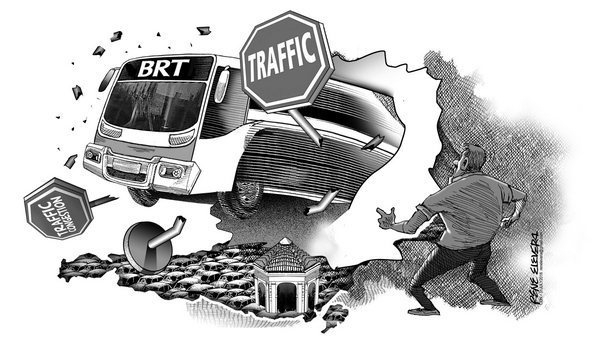
It would be nearly a year now when the national government approved the Bus Rapid Transit (BRT) project for implementation and it is only next month when work on the long delayed mass transport system would start in earnest, albeit with some modifications dictated on by the powers that be.
In essence, the incumbent administration simply couldn’t afford–despite its avowals that it would finance most of its projects through taxes from the Filipino people–to pursue its ambitious infrastructure and mass transport projects without loans from the international finance community.
That Transportation Secretary Arthur Tugade managed to tell officials of the World Bank that the government is considering to cancel the BRT is but a mere facade intended to show to all and sundry that the administration can go it alone, albeit with help from their friendly ally China, who it turned out wasn’t able to provide that much funding in the first place.
Thankfully World Bank officials just like the BRT proponents reiterated that the project remains feasible for Cebu City and even in Manila, where the BRT is also supposed to be implemented to complement the aging and eternally in need of repairs Light Railway Transit (LRT) and the Metro Railway Transit (MRT) systems.
In order to save face while projecting to all and sundry that they are still in control, the DOTr and the BRT opponents repackaged the project as part of their so-called “basket of solutions” for Metro Cebu while conveniently leaving out the fact that the project had been scheduled for implementation even before they came into power.
While those at City Hall can only be thankful that the BRT had finally been cleared for implementation, it remains to be seen whether the DOTr will keep true to its word to fasttrack its implementation or slow it down in favor of the pet projects of the administration’s local allies.
It would also be interesting to see if the BRT can prove to be effective and deliver on the promise of its proponents to provide a viable transport option for the riding public given that its coverage had been limited only to those areas with roads that have more than three lanes.
That opening may be served by the so-called “point to point” bus system copied from the BRT and being passed off as an original.
That, along with an LRT and a monorail system, can hopefully aid in resolving Metro Cebu’s traffic congestion.
Whatever, the Metro Cebu riding public can only join Cebu City officials in being grateful for whatever passes for small graces and tokens of generosity from the national government.